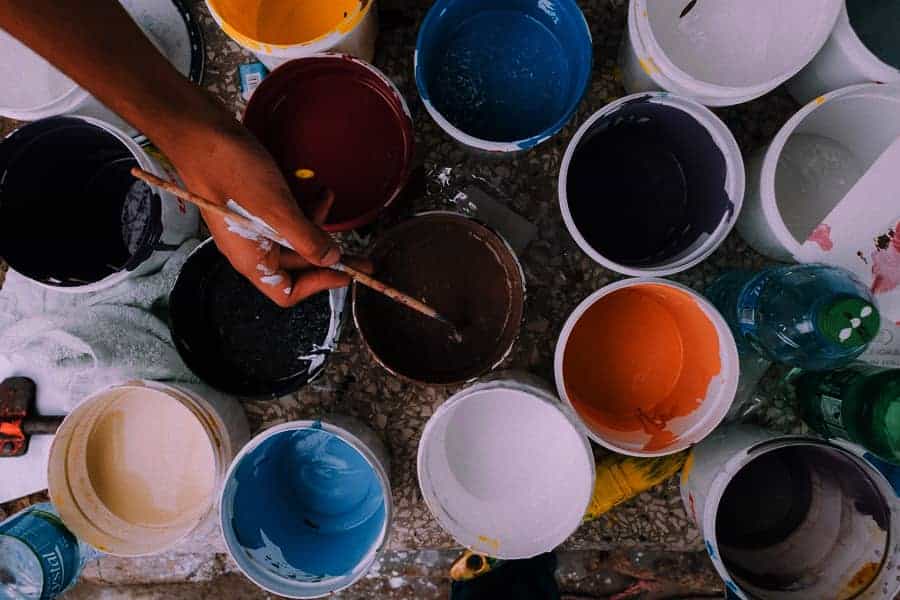Protect your floor and furniture during the interior home painting
Before you begin painting, you should cover your floor with a painter's material. Move or potentially cover any furnishings or different resources in the room utilizing painter's plastic. You can move your furniture to the focal point of the room and spot a covering or material fabric under the divider that you will paint.
Apply painter’s tape to the edges
Painting in an orderly fashion can be troublesome, so in the event that this is your first time painting, you will likely have to apply blue painter's tape to the edges of your dividers and any embellishment or installations. Apply the painter's tape so it is even with the edges of the dividers, trim, and apparatuses.
Mix your primer and paint
Before you utilize your groundwork or paint, pause for a minute to blend them well with a blending stick. This will assist with guaranteeing that the colors in the preliminary and paint are equitably conveyed.
Prep your walls
Prep your dividers. A smooth even surface will make it simpler to accomplish proficient quality outcomes, so set aside the effort to check your divider for flaws and fix them up before you begin.
Line the outer edges of your walls with primer
Dip your paintbrush in the preliminary can and afterward start painting a straight line along the external edge of one side of your divider. Paint along the edges in little segments and go gradually.
Do not overload the plate to the point that the calculated piece of the plate with edges is covered with groundwork. You will just need an inch or two or groundwork in the plate.
Coat the roller in primer during the interior home painting
Place the paint roller into the preliminary and roll the roller to and fro a couple of times. The roller ought to be covered equitably with a thick layer of preliminary, however not trickling groundwork when you get it.
Apply primer in a large “W” shape
When you are prepared to start covering the divider with preliminary, take your roller and apply groundwork in an enormous "W" shape. At that point, start utilizing smooth here and there movements to filling the territory around the "W." Keep painting until the space is totally and equitably covered with groundwork.
Allow the primer to dry for one day
Before you begin to apply your paint, you should let the groundwork dry totally. Leaving it to dry for around one day is a protected measure of time. Be that as it may, if the groundwork actually appears to be wet following one day, allow it one more day.
Pour your paint into the tray
When you are prepared to start painting the dividers, change your plate liner in the plate or get another plate. At that point, pour around one to two crawls of paint into your plate.
Begin lining the edges of the wall for the interior home painting
When you are prepared to start painting, plunge your paintbrush into the paint. It ought to be very much covered in paint, yet not dribbling. At the point when you are prepared, begin painting along the edges of your dividers and installations. Attempt to make straight even lines.
Apply paint in up and down motions
When you have completed the process of painting around the edges and installations, you can begin to fill in the focal point of your dividers. Start by dunking your roller in the paint and covering the divider by making here and there movements, trying to cover the painted edges. Your roller ought to be canvassed in an even layer of paint, yet it ought not trickle with paint.
Allow the paint to dry
The paint will require in any event one day to dry, so leave it be. Try not to attempt to supplant pictures, furniture, or different things until the paint is absolutely dry. You may likewise need to impede access to the space to guarantee that no little kids or pets can come into the room and contact the dividers.
Interior Home Painting TIPS
- Always utilize the suggested number of coats and permit the suggested measure of drying time between coats.
- Utilize one paint plate for each tone, or purchase expendable plastic paint plate liners and utilize an alternate one for each tone.
- For best outcomes when painting with colors, test the paint tone on a little space of the divider during the day to perceive how the shading will look prior to painting the whole room.
- Latex preliminary is the most ideal decision for inside surfaces, like drywall. It dries quicker than oil or shellac groundworks and it is additionally more solid.
- In the event that you have a huge region to paint which can't be finished in one go, you can enjoy a reprieve in the middle. Rather than cleaning the paintbrush each break, you can keep it wet, consequently preserving time and water.
Get in touch now!







